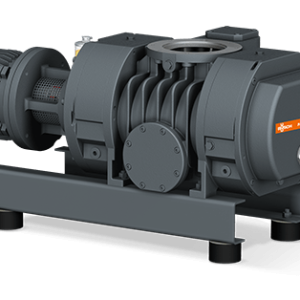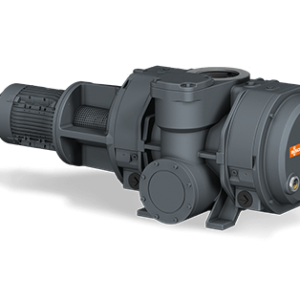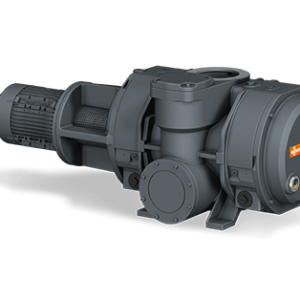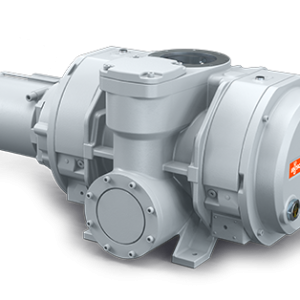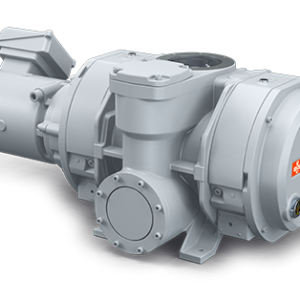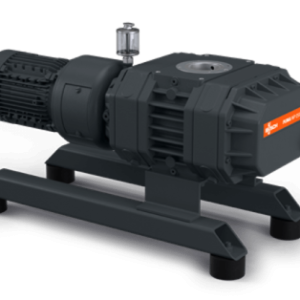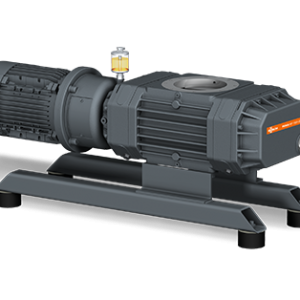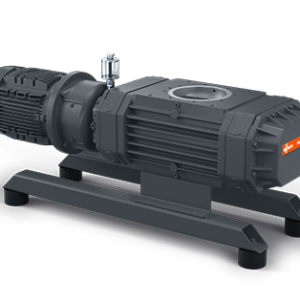Vacuum boosters increase the pumping speed and ultimate pressure of vacuum pumps. They can boost the performance of vacuum systems by up to a factor of ten.
Vacuum boosters operate according to the proven Roots principle: Within the housing of vacuum boosters, two lobes rotate synchronously. They do not come in contact with each other or the housing. Thus, no lubricants or operating fluids are required in the process chamber.
During the rotation of the lobes, gas is transported between the lobes and the housing into the backing pump.
The two lobes are driven by a pair of gear wheels located on the shaft ends of the gearbox and separated from the compression chamber. This maintains precise synchronous rotor timing.
Vacuum boosters work with or without a mechanical bypass valve. Without a mechanical bypass, care must be taken that the maximum permissible differential pressure between the inlet and the outlet is kept during operation. In vacuum boosters with a bypass valve a portion of the pumped medium is diverted. Thus, the differential pressure between inlet and outlet is automatically restricted and the booster is protected against overloading.

